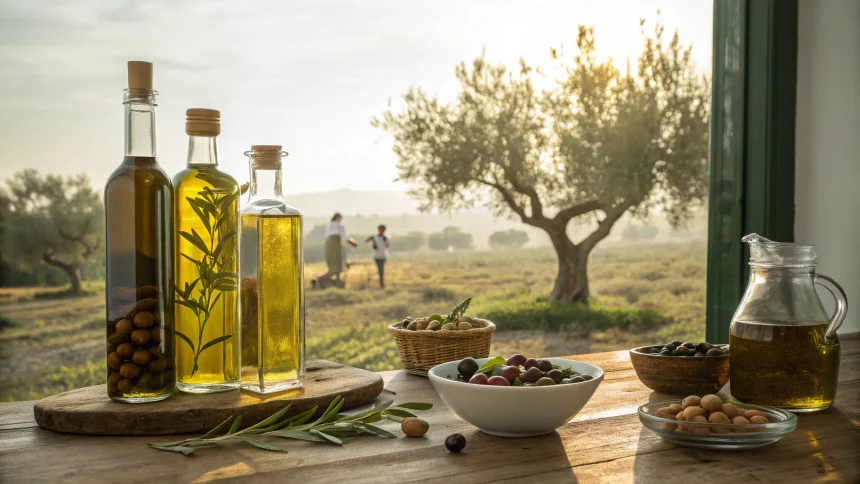Olive oil has become an unlikely flashpoint in U.S. trade policy. International producers say tariffs tied to the last administration are cutting into sales and reshaping supply lines, while also complicating other policy goals. The dispute spans farms, bottling plants, shipping docks, and Washington’s agenda, showing how one decision can ripple far from its target.
The core issue is simple. Extra duties have raised the cost of imported olive oil at the U.S. border. Producers abroad face thinner margins. Importers juggle higher prices and uncertain delivery. Consumers see tighter supplies and, at times, higher shelf prices. The stakes are wider than any one product, touching trade diplomacy and enforcement priorities.
“Trump’s tariffs are making business harder for international olive oil producers and it turns out those tariffs are even complicating other parts of the Trump administration’s agenda, too.”
How tariffs hit a staple
Tariffs are taxes on imports. When the U.S. raises them, overseas sellers or U.S. buyers pay more to bring goods in. Olive oil, a global commodity with thin margins, is sensitive to small price shifts. A few percentage points at the port can erase profits for growers and bottlers who compete on cents per liter.
Producers in Europe, North Africa, and the Middle East have long relied on U.S. demand. When duties rise, some exporters pull back. Others discount heavily or chase alternative markets. Importers in the U.S. may switch suppliers, reduce product variety, or pass the costs to shoppers.
Supply chain adjustments and workarounds
Companies react fast when trade costs change. Industry buyers describe a playbook that includes shifting orders to countries not covered by the duty, changing packaging, or altering where final processing occurs. These steps can be legal, though they add cost and complexity.
- Rerouting through non-tariffed origins or moving last-stage bottling to different countries.
- Reclassifying product types or sizes that are taxed differently.
- Negotiating shorter contracts to avoid being locked into high-cost shipments.
These adjustments cushion the shock but create new risks. Quality control can slip when suppliers switch quickly. Shipping times lengthen. Smaller importers, with less leverage and cash, get squeezed the most.
Collateral effects on policy goals
Tariffs are meant to gain leverage in trade talks, support certain domestic industries, or penalize rivals. Yet they can also collide with other aims. Higher import costs can stoke inflation at retail, undercutting price stability efforts. Tensions with allies over duties can make cooperation on unrelated security or technology issues harder.
Trade officials often balance enforcement with exemptions. When more sectors request relief, administrative bandwidth gets stretched. Agencies must police evasion, review exclusions, and defend cases in court, all while keeping broader policy on track.
Industry viewpoints
Olive oil exporters warn that uncertainty is as damaging as the duty rate. A Europe-based trader said buyers cut annual commitments and switched to month-to-month deals. A North African co-op manager described delaying mill upgrades because cash flow is unpredictable.
Importers in the U.S. report uneven pricing on store shelves. Premium brands hold prices but accept lower volumes. Value brands face sharper increases or reduced sizes. Restaurant buyers, especially small operators, have limited room to absorb higher costs.
Supporters of the tariffs argue they are tools to correct unfair practices and build bargaining power. They say short-term pain is worth long-term gains if trading partners make concessions. They also note domestic producers can benefit when imports cost more. Critics counter that consumers and small businesses shoulder the burden and that retaliation or diplomatic friction can follow.
What the data suggest
Trade statistics during tariff periods often show a reshuffling rather than a clean drop in imports. Buyers source from new origins, and shipments arrive through different routes. Price spreads between producing regions widen, reflecting transport changes and risk premiums.
Case studies from grocery aisles point to limited but real inflation pressures. When supply tightens due to poor harvests, tariffs magnify the effect. In better harvest years, competitive pressure can hide the duty in producer margins, but investment slows as companies wait for policy clarity.
The road ahead
Analysts watch three signals. First is policy review: any renewal, removal, or retargeting of duties. Second is harvest conditions in major producing regions, which can offset or amplify tariff effects. Third is consumer demand, especially from food service, which remains price sensitive.
Trade disputes rarely end cleanly. If duties persist, more of the industry will adapt logistics and contracts for a higher-cost world. If they ease, companies may unwind those changes, but trust and planning cycles will take time to rebuild.
For now, olive oil stands as a clear example of how a policy designed for leverage can reshape daily goods and press on other priorities. The next moves—by policymakers and by the market—will decide whether these pressures fade or harden into the new normal.







